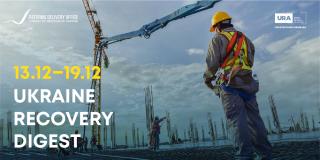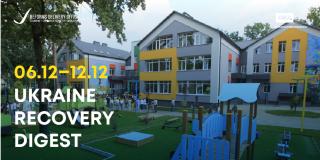Providing prompt access to land resources unimpeded by corruption is among the top-priority tasks of the new government's economic policy.
Presidential and parliamentary elections have pushed Ukraine into a new political reality where multiple overdue reforms, primarily the land reform, become possible.
Its progress has been hindered for a long time because any legislative initiatives to liberalize land matters, carry out real land decentralization, or simplify regulatory procedures most often crashed against the hopeless task of getting enough votes in the parliament to pass the law.
Today this problem may become a thing of the past if the country's government shows political will.
One should not be misled that the land reform is only about the market of agricultural land.
Any new investment project in industry, construction, mining operations, and many other areas starts with procuring, or modifying the intended use of, land.
However, land matters in Ukraine have always been too regulated, while imperfect and conflicting land laws create vast opportunities for corruption.
For this reason, providing unhampered access to land resources for business owners and the wider public by minimizing bureaucratic barriers and eliminating corruption should be treated today as one of the highest priority tasks of the new government's economic policy.
Their resolution will give a huge impetus to economic growth in the years to come.
What should we do for land matters to turn from a source of problems into a source of opportunities?
I invite the country's new political administration to take ten steps that they cannot get wrong:
Step 1. Introduce in 2020 a regulated market of agricultural land allowing Ukrainian citizens, farms, and agricultural enterprises to purchase land lots by setting maximum land size that may be owned or used by a person or a group of related persons and by determining the procedure of electronic land auctions.
Step 2. Implement a government program of partial loan guarantees for the acquisition of ownership of agricultural lands that are currently only used by farms and small agricultural enterprises.
Step 3. Transform the State Land Cadaster into the State Property Cadaster and make sure it is fully interoperable with the State Register of Real Rights in Real Estate and Encumbrances Over such Rights.
Overcome corporate raids in the land market by implementing the state program of expanding the State Property Cadaster to include details of land lots formed prior to 2004, and set out a procedure for batch error correction in the Cadaster.
Introduce the use of the distributed database technology (blockchain) in cadaster- and registration-related activities.
Start building the national infrastructure of geospatial data by making details of industry- and agency-specific cadasters open and interoperable.
Step 4. Carry out authentic decentralization of land management by legally transferring the ownership of state-owned lands outside populated areas (other than lands of the Ministry of Defense, state-owned enterprises, institutions and organizations) to the community.
Confer powers on local government to enter details into the State Property Cadaster and monitor the use and protection of land.
Step 5. Privatize state-owned agricultural enterprises exclusively by first adding land lots owned by these enterprises to their authorized capital.
Make sure that a portion of land of these enterprises is fairly distributed among their employees, retirees, and social workers of the countryside.
Step 6. Uproot the primary sources of mass corruption in land matters by revoking free privatization of land (other than land provided to people for use before 2002, and the grant of land lots to veterans of the Anti-Terrorist Operation).
Introduce a fee that should be paid in favor of the local budget by persons interested in modifying the intended use of land lots as a part of the gain in the market value of such lots.
Standardize requirements to land management documentation.
Step 7. Replace the standard valuation of land with mass valuation of property that would be carried out automatically and based on the then market prices (including in the lease market). Make sure that value so achieved is used for withholding property taxes and granting the use (including lease) of state- and community-owned land.
Step 8. Create a modern state service of geospatial data that would have no powers to manage land or monitoring/supervision functions. Its main objective would be to maintain and populate the State Property Cadaster and the town planning cadaster, to coordinate the creation, topographic and geodesic support of a national infrastructure of geospatial data.
Authorize this service to take wholesale inventory of land in order to populate cadasters with reliable data of land lots and other properties, land use restrictions, utility networks, and requirements of planning documentation.
Wind up the State Service of Geodesy, Cartography and Cadaster and its territorial agencies.
Step 9. Use European best practices to introduce laws on land consolidation and comprehensive land management intended to thoroughly remove shortcomings in boundaries, estates, and location of several land lots at a time on a certain territory, to allocate land for social needs, the development of infrastructure, the environmental network, and protection of water facilities.
Facilitate systemic deregulation of land management, land valuation, topographic and geodesic activities.
Step 10. Enact a new version of the Land Code of Ukraine to consolidate the disjointed land laws and further develop land matters on clearly defined legal foundations, complete the land reform, protect land as the nation's primary wealth, and harmonize Ukrainian laws with EU laws.
Some of the proposed steps can take several months, while others several years. But all of them need the country's political elite to be decisive and uncompromising.
As a reward, the country will enjoy a better investment climate and economic growth.



